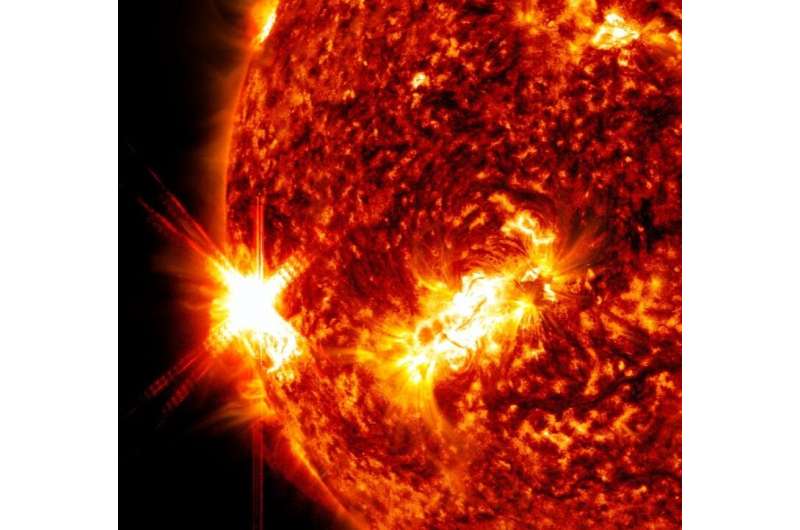NASA's Solar Dynamics Observatory captured this image of a solar flare—as seen in the bright flash on the left side of the image—on Jan. 9, 2023. The image shows a subset of extreme ultraviolet light that highlights the extremely hot material in flares and is colorized in red and gold. Credit: NASA/SDO
The sun emitted a strong solar flare, peaking at 1:50 p.m. EST on Jan. 9, 2023. NASA's Solar Dynamics Observatory, which watches the sun constantly, captured imagery of the event.
Solar flares are powerful bursts of energy. Flares and solar eruptions can impact radio communications, electric power grids, navigation signals, and pose risks to spacecraft and astronauts.
This flare is classified as an X1.9 flare. X-class denotes the most intense flares, while the number provides more information about its strength.
To see how such space weather may affect Earth, please visit NOAA's Space Weather Prediction Center spaceweather.gov/ , the U.S. government's official source for space weather forecasts, watches, warnings, and alerts. NASA works as a research arm of the nation's space weather effort.
Provided by NASA
























